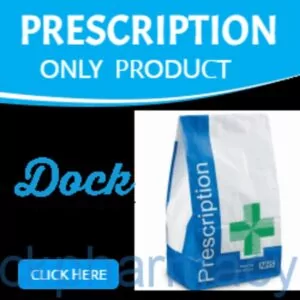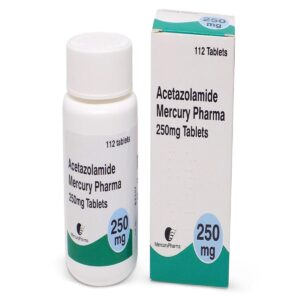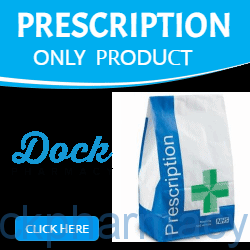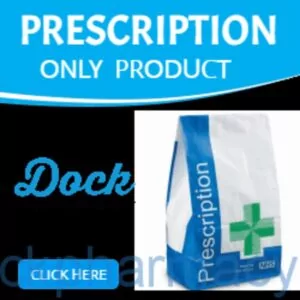- Active Ingredient: timolol
- Treatment of Glaucoma
- Prescription Product
- Description
- Additional Information
- Brand
- How To Use
- Product Details
- Side Effects
- Ingredients
- Reviews (0)
- Questions & Answers
Timolol Eye Drops 0.5%, 5ML
What Timolol Eye Drops 0.5% is and what it is used for?
Timolol Eye Drops 0.5% contains a substance called timolol which belongs to a group of medicines called beta-blockers. Timolol Eye Drops lowers the pressure in your eye(s).
Timolol Eye Drops 0.5% is used to treat raised pressure in eye (s) which occurs in various conditions including glaucoma and ocular hypertension
What is Glaucoma?
Glaucoma is a common eye condition where the optic nerve, which connects the eye to the brain, becomes damaged.
It’s usually caused by fluid building up in the front part of the eye, which increases pressure inside the eye.
Your eye contains a clear, watery liquid that feeds the inside of the eye. Liquid is constantly being drained out of the eye and new liquid is made to replace this. If the liquid cannot drain out quickly enough, the pressure inside the eye builds up. This medicine works by increasing the amount of liquid that is drained. This reduces the pressure inside the eye. If the high pressure is not reduced, it could lead to a disease called glaucoma and eventually damage your sight.
Glaucoma can lead to loss of vision if it’s not diagnosed and treated early.
It can affect people of all ages, but is most common in adults in their 70s and 80s.
Glaucoma does not usually cause any symptoms to begin with.
It tends to develop slowly over many years and affects the edges of your vision (peripheral vision) first.
For this reason, many people do not realise they have glaucoma, and it’s often only picked up during a routine eye test.
If you do notice any symptoms, they might include blurred vision, or seeing rainbow-coloured circles around bright lights.
Both eyes are usually affected, although it may be worse in 1 eye.
Very occasionally, glaucoma can develop suddenly and cause:
Visit an opticians or a GP if you have any concerns about your vision.
If you have glaucoma, early diagnosis and treatment can help stop your vision getting worse.
Without treatment, glaucoma can eventually lead to blindness.
If you develop symptoms of glaucoma suddenly, go to your nearest eye casualty unit or A&E as soon as possible.
This is a medical emergency that may require immediate treatment.
There are several different types of glaucoma.
The most common is called primary open angle glaucoma. This tends to develop slowly over many years.
It’s caused by the drainage channels in the eye becoming gradually clogged over time.
Other types of glaucoma include:
- acute angle closure glaucoma – an uncommon type caused by the drainage in the eye becoming suddenly blocked, which can raise the pressure inside the eye very quickly
- secondary glaucoma – caused by an underlying eye condition, such as inflammation of the eye (uveitis)
- childhood glaucoma (congenital glaucoma) – a rare type that occurs in very young children, caused by an abnormality of the eye
Glaucoma can occur for a number of reasons.
Most cases are caused by a build-up of pressure in the eye when fluid is unable to drain properly.
This increase in pressure then damages the nerve that connects the eye to the brain (optic nerve).
It’s often unclear why this happens, although certain things can increase the risk, including:
- your age – glaucoma becomes more common as you get older
- your ethnicity – people of African, Caribbean or Asian origin are at a higher risk
- your family history – you’re more likely to develop glaucoma if you have a parent or sibling with the condition
- other medical conditions – such as short-sightedness, long-sightedness and diabetes
It’s not clear whether you can do anything to prevent glaucoma, but having regular eye tests should pick it up as early as possible.
The treatment recommended for you will depend on the type of glaucoma you have, but the options are:
- eyedrops – to reduce the pressure in your eyes
- laser treatment – to open up the blocked drainage tubes or reduce the production of fluid in your eyes
- surgery – to improve the drainage of fluid
You’ll also probably need regular appointments to monitor your condition and check the treatment is working.
Further Information on Glaucoma
Timolol Eye Drops 0.5% Reviews
After using Timolol Eye Drops 0.5%, it’s helpful to let others know about your experience. Reviews of an item help other users know that medicines received have helped the condition it is claimed for, how well the treatment worked or any issues to be aware of. We invite our users to leave a review of both their treatment and of the service provided. Click on the reviews tab to see if there has been feedback on this item.
Price of Timolol Eye Drops 0.5% in UK
Where to buy Timolol Eye Drops 0.5%
Timolol Eye Drops 0.5% is available to buy with a prescription at Dock Pharmacy Essex UK, UK Online Pharmacy.
You can buy Timoptol Eye Drops 0.5% uk with a private prescription or with a vets prescription.
Related Article
| Brand | |
|---|---|
Brand
Timolol
How To Use
How to use Timolol 0.25% Eye drops
The usual dose of Timoptol eye drops is one drop in the affected eye(s) twice each day:
- one drop in the morning
- one drop in the evening.
Please read the Patient Information Leaflet before using
Product Details
What you need to know before you use Timolol eye drops 0.5%
Do not use Timolol if:
you are allergic (hypersensitive) to timolol ,beta-blockers or any other ingredient of this medicine
(see section 6: Content of the pack and other information).
you have now or have had in past respiratory problems such as asthma, severe chronic obstructive
bronchitis (severe lung disease which may cause wheeziness, difficulty in breathing and/or longstanding cough).
you have a slow heart beat, heart problems, heart failure or disorders of heart rhythm (irregular
heart beats).“Cardiogenic shock” – a serious heart condition caused by very low blood
pressure, which may result in the following symptoms: dizziness and lightheadedness, fast
pulse rate, white skin, sweating, restlessness, loss of consciousness.
If you are not sure whether you should use Timolol talk to your doctor or pharmacist.
Warnings and precautions
Talk to your doctor if you have now or have had in the past:
coronary heart disease (symptoms can include chest pain or tightness, breathlessness or choking),
heart failure
low blood pressure
disturbances of heart rate such as slow heart beat
breathing problems, asthma or chronic obstructive pulmonary disease
poor blood circulation disease (such as Raynaud’s disease or Raynaud’s syndrome)
diabetes as timolol may mask signs and symptoms of low blood sugar
overactivity of the thyroid gland as timolol may mask signs and symptoms
you wear soft contact lenses (see section Timolol contains benzalkonium chloride and
phosphates).
Tell your doctor before you have an operation that you are using timolol as it may change effects of some
medicines used during anaesthesia.
If your eye becomes irritated or any new eye problems come on, talk to your doctor straight away. Eye
problems could include redness of the eye or swelling of the eyelids (see Section 4: Possible side effects).
If you suspect that Timolol is causing an allergic reaction or hypersensitivity (for example, skin rash, or
redness and itching of the eye), stop using Timolol and contact your doctor immediately.
Tell your doctor if:
you get an eye infection
you injure your eye or have an operation on it
your eye problems get worse or you get any new symptoms.
Children and adolescents There is only limited data available on the use of timolol in infants and
children. For example, in one small clinical study, timolol, the active ingredient in Timolol eye drops, has
been studied in infants and children aged 12 days to 5 years, who have elevated pressure in the eye(s) or
have been diagnosed with glaucoma. For more information, talk to your doctor.
Timolol should generally be used with caution in young patients. In newborns, infants and younger
children Timolol should be used with extreme caution. If coughing, wheezing, abnormal breathing or
abnormal pauses in breathing (apnoea) occur, the use of the medication should be stopped immediately.
Contact your doctor as soon as possible. A portable apnoea monitor may also be helpful.
Other medicines and Timolol
Timolol can affect or be affected by other medicines you are using, including other eye drops for the
treatment of glaucoma. Tell your doctor if you are using or intend to use medicines to lower blood
pressure, heart medicine or medicines to treat diabetes. Please tell your doctor or pharmacist if you are
taking or have recently taken any other medicines, including other eye drops or medicines obtained
without a prescription.
It is important to tell your doctor before using Timolol if you are taking one or more of the following
medicines:
a calcium antagonist (e.g. nifedipine, verapamil or diltiazem) often used to treat high blood
pressure, angina, an abnormal heartbeat or Raynaud’s syndrome
digoxin, a medicine used to treat heart failure or an abnormal heartbeat
medicines known as a catecholamine-depleting agents (e.g. rauwolfia alkaloids/reserpine) used to
treat high blood pressure
medicines called pressor amines (e.g. adrenaline) used to treat severe allergic reaction
clonidine to treat high blood pressure
quinidine, a medicine used to treat heart conditions and some types of malaria.
other beta-blockers taken by mouth or used as eye drops, because they belong to the same group
of medicines as Timolol and could have an additive effect
antidepressants known as fluoxetine and paroxetine.
Pregnancy and breast-feeding
Ask your doctor for advice before taking any medicine.
Use in pregnancy
Do not use Timolol if you are pregnant unless your doctor considers it necessary.
Use in breast-feeding
Do not use Timolol if you are breast-feeding. Timolol may get into your milk. Ask your doctor for advice
before taking any medicine during breast-feeding.
Driving and using machines
There are possible side effects associated with Timolol, such as dizziness, tiredness and changes in your
eyesight, such as blurred vision, drooping of the upper eyelid (making the eye stay half closed), double
vision which may affect your ability to drive and/or operate machinery. Do not drive and/or operate
machinery until you feel well and your vision is clear.
Timolol contains benzalkonium chloride and phosphates
This medicine contains 0.10 mg/ml benzalkonium chloride as a preservative. Benzalkonium chloride may
be absorbed by soft contact lenses and may change the colour of the contact lenses. You should remove
contact lenses before using this medicine and put them back 15 minutes afterwards.
Benzalkonium chloride may also cause eye irritation, especially if you have dry eyes or disorders of the
cornea (the clear layer at the front of the eye). If you feel abnormal eye sensation, stinging or pain in the
eye after using this medicine, talk to your doctor.
This medicine contains the following phosphates
disodium phosphate dodecahydrate (16.72 mg/ml for Timolol 0.25% and Timolol 0.5%)
sodium dihydrogen phosphate dihydrate (3.12 mg/ml for Timolol 0.25% and Timolol 0.5%)
If you suffer from severe damage to the clear layer at the front of the eye (the cornea), phosphates may cause in very rare cases cloudy patches on the cornea due to calcium build-up during treatment.
How to store Timolol
Keep this medicine out of sight and reach of children.
Do not store at a temperature above 250C.
Store the bottle in the outer carton in order to protect it from light.
Discard the bottle 28 days after opening, even if there is solution remaining.
Do not use Timolol after the expiry date which is stated on the carton and the bottle after EXP.
The expiry date refers to the last day of that month. Make sure the container is properly closed.
Do not throw away any medicines via wastewater or household waste. Ask your pharmacist how to
throw away medicines you no longer use. These measures will help to protect the environment.
Side Effects
Like all medicines, Timolol eye drops 0.5% can cause side effects, although not everybody gets them.
You can usually carry on taking the drops, unless the effects are serious. If you’re worried, talk to a doctor
or pharmacist. Do not stop using Timolol without speaking to your doctor.
Like other medicines applied into eyes, timolol is absorbed into the blood. This may cause similar side
effects as seen with intravenous and/or oral beta-blocking agents.
Incidence of side effects after topical ophthalmic administration is lower than when medicines are, for
example, taken by mouth or injected. Listed side effects include reactions seen within the class of betablockers when used for treating eye conditions
If you develop allergic reactions including swelling beneath the skin that can occur in areas such
as the face, limbs and can obstruct the airway which may cause difficulty in swallowing or
breathing, hives or itchy rash, localized and generalized rash, itchiness, severe sudden lifethreatening allergic reaction, stop taking your eye drops and seek medical attention immediately.
• Low blood glucose levels.
• Difficulty in sleeping (insomnia), depression, nightmares, memory loss, hallucination.
• Signs and symptoms of eye irritation (e.g. burning, stinging, itching, tearing, redness),
inflammation of the eyelid, inflammation in the cornea, blurred vision and detachment of the
layer below the retina that contains blood vessels following filtration surgery which may cause
visual disturbances, decreased corneal sensitivity, dry eyes, corneal erosion (damage to the front
layer of the eyeball), drooping of the upper eyelid (making the eye stay half closed), double
vision, sensitivity to light, discharge from the eye, pain in the eye.
If you suffer from severe damage to the clear layer at the front of the eye (the cornea), phosphates
may cause in very rare cases cloudy patches on the cornea due to calcium build-up during
treatment.
• Ringing sound in the ears.
• Slow heart rate, chest pain, palpitations, oedema (fluid build up), changes in the rhythm or speed
of the heartbeat, congestive heart failure (heart disease with shortness of breath and swelling of
the feet and legs due to fluid build up), a type of heart rhythm disorder, heart failure, heart attack.
Low blood pressure, Raynaud’s phenomenon, cold hands and feet. limping because there is a
reduced blood supply to your legs.
• Constriction of the airways in the lungs (predominantly in patients with pre-existing disease),
difficulty in breathing, shortness of breath, wheezing, cough.
Taste disturbances, nausea, indigestion, diarrhoea, dry mouth, abdominal pain, vomiting.
Fainting, stroke, reduced blood supply to the brain, increased signs and symptoms of myasthenia
gravis (muscle disorder), dizziness, unusual sensations like tingling or pins and needles, and
headache.
• Hair loss, skin rash with white silvery coloured appearance (psoriasiform rash) or worsening of
psoriasis, skin rash, itching.
• Sexual dysfunction, decreased sex drive, decreased libido In men a condition which affects your
penis called Peyronie’s disease. The signs may be abnormal curve, pain or hardening of the tissue
of your penis.
• Muscle weakness/tiredness, muscle pain not caused by exercise.
• A condition called lupus (systemic lupus erythematosus).
If any of the side effects get serious, or if you notice any side effects not mentioned in this leaflet, please
inform your doctor or pharmacist.
Reporting of side effects
If you get any side effects, talk to your doctor or pharmacist. This includes any possible side effects not
listed in this leaflet. You can also report side effects directly via the Yellow Card Scheme at
www.mhra.gov.uk/yellowcard or search for MHRA Yellow Card in the Google Play or Apple App Store.
By reporting side effects you can help provide more information on the safety of this medicine.
Ingredients
What Timolol eye drops 0.5% contains
The active ingredient is timolol maleate, where 5mg/ml timolol is equivalent to 6.8mg/ml of timolol maleate and 5mg/ml timolol is equivalent to 6.8mg/ml of timolol maleate.
This product also contains sodium dihydrogen phosphate dihydrate, disodium edetate, disodium phosphate dodecahydrate, benzalkonium chloride (as preservative) 0.01% w/v, sodium hydroxide, sodium
chloride and water for injection.
Only logged in customers who have purchased this product may leave a review.
Questions and answers of the customers
There are no questions yet, be the first to ask something for this product.
Other Products From This Seller
Original price was: £34.99.£24.95Current price is: £24.95.
Wahl Extreme Grip Beard Trimmer Precision Grooming with Comfort Grip and Adjustable Cutting Lengths Take Control of Your Grooming with the Wahl Extreme Grip Beard Trimmer Transform your grooming routine with the Wahl Extreme Grip Beard Trimmer, designed for precision, comfort, and versatility. Whether you’re sculpting a sharp beard line, maintaining stubble, or styling longer […]
Learn MoreOriginal price was: £34.99.£24.95Current price is: £24.95.
- Availability: in stock
Original price was: £23.99.£17.95Current price is: £17.95.
WAHL Vogue Corded Hair Clipper for Men Professional Precision with Adjustable Taper Lever and High-Carbon Steel Blades Transform Your Grooming Routine with the WAHL Vogue Corded Hair Clipper for Men Elevate your grooming experience with the WAHL Vogue Corded Hair Clipper, a professional-grade grooming tool designed for men who value precision and performance. Whether you’re […]
Learn MoreOriginal price was: £23.99.£17.95Current price is: £17.95.
- Availability: in stock
Original price was: £30.00.£8.95Current price is: £8.95.
Wahl Peaky Blinders Beard Trimmer Gift Set Limited Edition Cordless Grooming Kit for Men Join the ranks of the Peaky Blinders with the Wahl Peaky Blinders Beard Trimmer Gift Set. This exclusive collaboration between Wahl and the iconic TV series offers a comprehensive grooming solution for the modern gentleman. Key Features: Rechargeable Cordless Trimmer: Equipped […]
Learn MoreOriginal price was: £30.00.£8.95Current price is: £8.95.
- Availability: in stock
Original price was: £54.63.£39.95Current price is: £39.95.
OMRON RS2 Wrist Blood Pressure Monitor Compact and Accurate BP Monitoring The OMRON RS2 Wrist Blood Pressure Monitor is a compact and user-friendly device designed for quick and accurate blood pressure and pulse rate measurements. Utilizing the oscillometric method, it ensures reliable readings with minimal user input. Key Features: Automatic Inflation: The device inflates the […]
Learn MoreOriginal price was: £54.63.£39.95Current price is: £39.95.
- Availability: in stock
Original price was: £69.99.£59.99Current price is: £59.99.
Omron M4 Intelli IT Blood Pressure Monitor Bluetooth-Enabled Upper Arm BP Monitor with Intelli Wrap Cuff The Omron M4 Intelli IT Blood Pressure Monitor is a clinically validated device designed for easy and accurate blood pressure monitoring at home. With Bluetooth connectivity, it seamlessly syncs your readings to the Omron Connect app, allowing you to […]
Learn MoreOriginal price was: £69.99.£59.99Current price is: £59.99.
- Availability: in stock
Original price was: £39.99.£33.95Current price is: £33.95.
Omron M2+ Upper Arm Blood Pressure Monitor The Omron M2+ Upper Arm Blood Pressure Monitor is a fully automatic device designed to provide quick and accurate blood pressure and pulse rate measurements. Utilizing the oscillometric method, it ensures reliable readings with minimal user input. Key Features: IntelliSense Technology: Automatically inflates the cuff to the ideal […]
Learn MoreOriginal price was: £39.99.£33.95Current price is: £33.95.
- Availability: in stock
Original price was: £19.99.£9.95Current price is: £9.95.
Ted Baker M Gift Set 30ml EDT Spray and 150ml Body Wash Experience the refined elegance of the Ted Baker M Gift Set, comprising a 30ml Eau de Toilette Spray and a 150ml Body Wash. This meticulously crafted set offers a harmonious blend of notes, encapsulating masculinity and sophistication. Ideal for gifting or personal indulgence, […]
Learn MoreOriginal price was: £19.99.£9.95Current price is: £9.95.
- Availability: in stock
Original price was: £33.00.£19.99Current price is: £19.99.
Iceberg Twice Pour Homme Eau de Toilette 125ml Gift Set Aromatic Fougère Fragrance for Men Discover the timeless elegance of Iceberg Twice Pour Homme Eau de Toilette 125ml Gift Set, a sophisticated aromatic fougère fragrance designed for the modern man. This exclusive gift set includes a 125ml Eau de Toilette, offering a complete scent experience […]
Learn MoreOriginal price was: £33.00.£19.99Current price is: £19.99.
- Availability: in stock
Original price was: £44.00.£28.95Current price is: £28.95.
Davidoff Cool Water Gift Set For Men, 2pc Gift set Dive into the invigorating essence of the ocean with the Davidoff Cool Water Gift Set for Men. This exclusive 2-piece set includes a 4.2 fl. oz. Eau de Toilette and a 2.5 fl. oz. After Shave Balm, offering a complete grooming experience that embodies freshness […]
Learn MoreOriginal price was: £44.00.£28.95Current price is: £28.95.
- Availability: in stock
Original price was: £19.95.£9.95Current price is: £9.95.
Ted Baker W Pink Gift Set 30ml EDT and 150ml Shower Gel Experience the elegance of Ted Baker W Pink Gift Set, comprising a 30ml Eau de Toilette and a 150ml Shower Gel. This exquisite set offers a harmonious blend of floral and woody notes, encapsulating femininity and sophistication. Ideal for gifting or personal indulgence, […]
Learn MoreOriginal price was: £19.95.£9.95Current price is: £9.95.
- Availability: in stock

















Reviews
There are no reviews yet